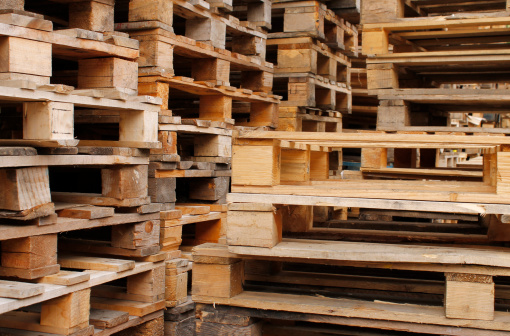Let’s take a look at what goes into the manufacturing of pallets. Because pallets are such a common sight at every imaginable shipping destination, they may seem as if they are knocked together with spare bits of lumber. But the pallet production process is sophisticated and precise.
Typically when an order is received, the customer information is already in a databank and so when a standard kind of pallet is ordered, the specifications are already known. However, a new customer may need pallets designed, or they may have unique specifications and that need to be addressed. Once a vendor knows the time line for delivery, the production process begins.
First the wood needs to be cut. The appropriate material is selected and the deck boards and stringers are all cut to fill the order. At this point, some secondary processes may be applied such as cutting 4-way notches in stringers to allow access from all 4 sides of the pallet. This is also when the wood may be treated if it will be shipped out of the country.
Once the wood is cut, it is assembled. High volume nailing machines that are fully automated are used to mass produce the pallets often at a rate of 225 pallets per hour. Smaller orders of less than 200 are usually assembled by hand. Setting up the machine for lower numbers is not worth most producers’ costs. When the order is complete, it is delivered to the customer.
Shipping for Savings
60% of the cost of a pallet comes from the cost of the lumber. Since every manufacturer is buying the same wood and has similar labor costs, the main source of savings is shipping. A manufacturer who is geographically closer to your operation will cost less. However, you can save on pallets by placing efficient orders that fill up a truck. Most trucks can carry 600 pallets, so if you are not buying full truckloads, you are spending more per pallet on transportation costs. If two manufacturers have very different costs than you in the same geographic area, they are probably lowering their cost by using lower quality wood.
The production of wood pallets, like any other shipping container, must result not only in quality products but also guarantee a secure supply chain and reasonable shipping costs. From the expedient processing of orders, through to assembly and shipping, a major vendor can provide a seamless service for businesses requiring wood pallets for a variety of materials.





